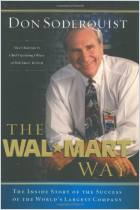Únase a getAbstract para acceder al resumen.

Únase a getAbstract para acceder al resumen.
Rick Wartzman
Still Broke
Walmart's Remarkable Transformation and the Limits of Socially Conscious Capitalism
Public Affairs, 2022
¿De qué se trata?
Rick Wartzman considers Walmart’s thorny worker relationships through the prism of US capitalism.
Recommendation
For decades, discount retailer Walmart struggled with its image as a malevolent corporate behemoth that underpaid workers and harmed local communities. However, the company has made great strides in the 21st century. It’s become a leader in climate-friendly operations and now pays its employees, on average, more than double the federal minimum wage. Why, then, do so many Walmart workers still struggle to make ends meet? In this well-researched history, Rick Wartzman argues that Walmart’s travails reflect how American capitalism fails modern workers and accepts income inequality as the norm.
Summary
About the Author
Rick Wartzman is co-president of Bendable Labs, a technology, consulting and research firm that specializes in the areas of lifelong learning, workforce development and job quality.
























Comment on this summary